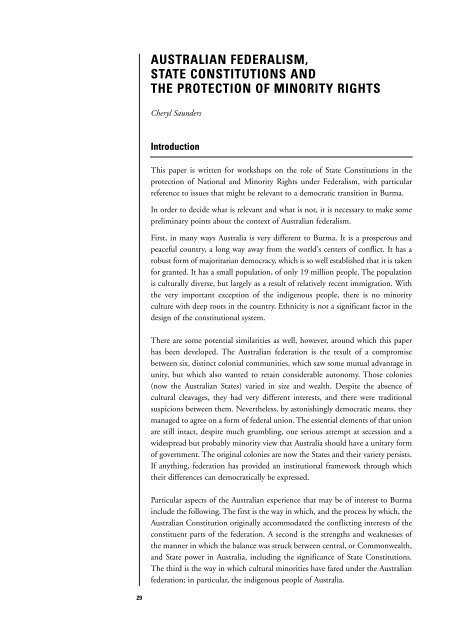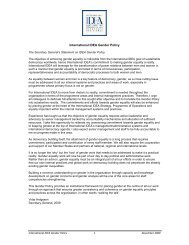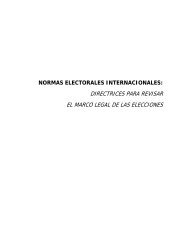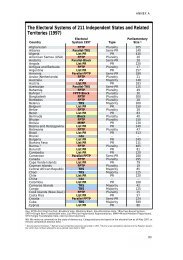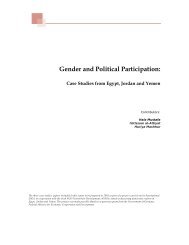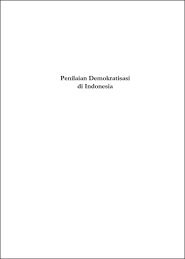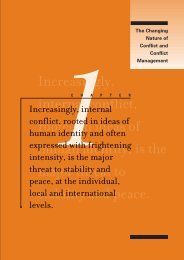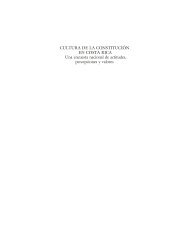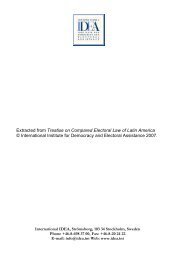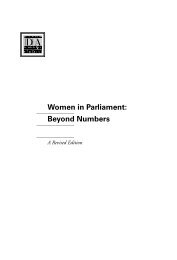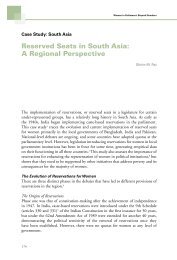The Role of State Constitutions in Protecting ... - International IDEA
The Role of State Constitutions in Protecting ... - International IDEA
The Role of State Constitutions in Protecting ... - International IDEA
You also want an ePaper? Increase the reach of your titles
YUMPU automatically turns print PDFs into web optimized ePapers that Google loves.
AUSTRALIAN FEDERALISM,<br />
STATE CONSTITUTIONS AND<br />
THE PROTECTION OF MINORITY RIGHTS<br />
Cheryl Saunders<br />
Introduction<br />
This paper is written for workshops on the role <strong>of</strong> <strong>State</strong> <strong>Constitutions</strong> <strong>in</strong> the<br />
protection <strong>of</strong> National and M<strong>in</strong>ority Rights under Federalism, with particular<br />
reference to issues that might be relevant to a democratic transition <strong>in</strong> Burma.<br />
In order to decide what is relevant and what is not, it is necessary to make some<br />
prelim<strong>in</strong>ary po<strong>in</strong>ts about the context <strong>of</strong> Australian federalism.<br />
First, <strong>in</strong> many ways Australia is very different to Burma. It is a prosperous and<br />
peaceful country, a long way away from the world's centers <strong>of</strong> conflict. It has a<br />
robust form <strong>of</strong> majoritarian democracy, which is so well established that it is taken<br />
for granted. It has a small population, <strong>of</strong> only 19 million people. <strong>The</strong> population<br />
is culturally diverse, but largely as a result <strong>of</strong> relatively recent immigration. With<br />
the very important exception <strong>of</strong> the <strong>in</strong>digenous people, there is no m<strong>in</strong>ority<br />
culture with deep roots <strong>in</strong> the country. Ethnicity is not a significant factor <strong>in</strong> the<br />
design <strong>of</strong> the constitutional system.<br />
<strong>The</strong>re are some potential similarities as well, however, around which this paper<br />
has been developed. <strong>The</strong> Australian federation is the result <strong>of</strong> a compromise<br />
between six, dist<strong>in</strong>ct colonial communities, which saw some mutual advantage <strong>in</strong><br />
unity, but which also wanted to reta<strong>in</strong> considerable autonomy. Those colonies<br />
(now the Australian <strong>State</strong>s) varied <strong>in</strong> size and wealth. Despite the absence <strong>of</strong><br />
cultural cleavages, they had very different <strong>in</strong>terests, and there were traditional<br />
suspicions between them. Nevertheless, by astonish<strong>in</strong>gly democratic means, they<br />
managed to agree on a form <strong>of</strong> federal union. <strong>The</strong> essential elements <strong>of</strong> that union<br />
are still <strong>in</strong>tact, despite much grumbl<strong>in</strong>g, one serious attempt at secession and a<br />
widespread but probably m<strong>in</strong>ority view that Australia should have a unitary form<br />
<strong>of</strong> government. <strong>The</strong> orig<strong>in</strong>al colonies are now the <strong>State</strong>s and their variety persists.<br />
If anyth<strong>in</strong>g, federation has provided an <strong>in</strong>stitutional framework through which<br />
their differences can democratically be expressed.<br />
Particular aspects <strong>of</strong> the Australian experience that may be <strong>of</strong> <strong>in</strong>terest to Burma<br />
<strong>in</strong>clude the follow<strong>in</strong>g. <strong>The</strong> first is the way <strong>in</strong> which, and the process by which, the<br />
Australian Constitution orig<strong>in</strong>ally accommodated the conflict<strong>in</strong>g <strong>in</strong>terests <strong>of</strong> the<br />
constituent parts <strong>of</strong> the federation. A second is the strengths and weaknesses <strong>of</strong><br />
the manner <strong>in</strong> which the balance was struck between central, or Commonwealth,<br />
and <strong>State</strong> power <strong>in</strong> Australia, <strong>in</strong>clud<strong>in</strong>g the significance <strong>of</strong> <strong>State</strong> <strong>Constitutions</strong>.<br />
<strong>The</strong> third is the way <strong>in</strong> which cultural m<strong>in</strong>orities have fared under the Australian<br />
federation; <strong>in</strong> particular, the <strong>in</strong>digenous people <strong>of</strong> Australia.<br />
29


